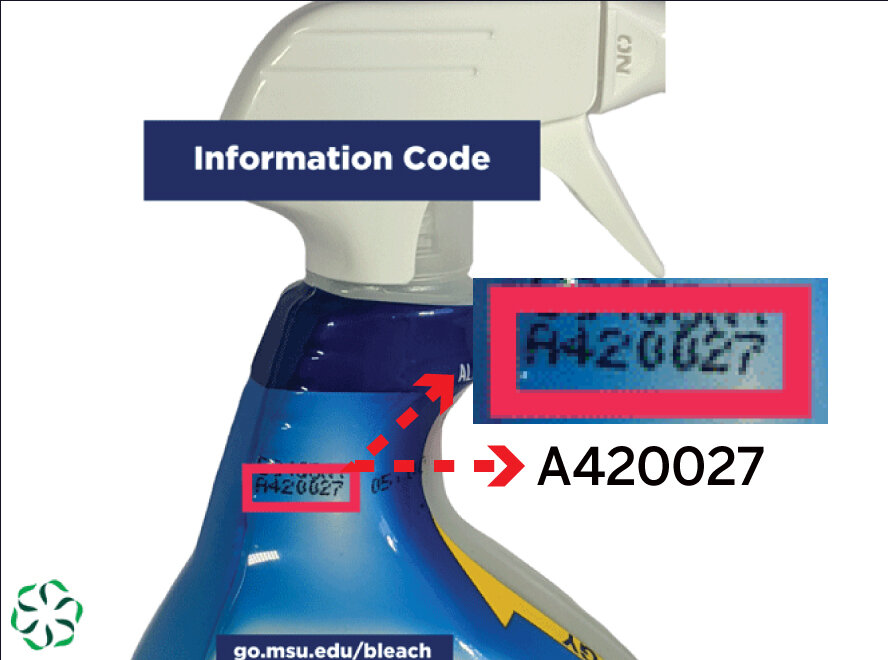Did You Know Disinfectants Expire?
YUP!! It’s true although it’s not labeled as straightforward as other products. Disinfectant products like Clorox Bleach and Lysol Disinfectant Spray use what’s called a “production code” that must be deciphered by consumers to determine the date it was produced. As if that’s not annoying enough, they then make you do research and math so you can finish the equation and get your answer. Who has time for all that?
Well, we may not be able to change how disinfectant products are labeled, but we can we lay out the steps you need to get the answer. Here’s what you need to do:
STEP 1: LOCATE
Locate the disinfectant production code on the bottle. Look at neck or bottom of the bottle for a stamp that starts with a letter followed by a string of numbers. Let’s use production code A420027 for this example.
STEP 2: DECODE:
The first two characters (A4) identify the plant number where it was made. The next two characters (20) are the last two digits of the year it was produced. The last three characters (027) are the day of the year it was produced. So A420027 means it was produced at Plant #A4, in year 2020, on the 27th day of the year or on January 27, 2020.
STEP 3: Go to the product website.
Every product has a a unique break-down window because chemicals have different half-lives. Clorox Bleach » for example expires 1-year after production and Lysol Disinfectant Spray » expires 2-years after production. These numbers assume they are stored in its original container and at the temperatures indicated on the label. If you alter either one of these factors then the expiration time will also be altered.
STEP 4: Do the math.
Using the expiration time specified on the website, you then have to add it to the date deciphered from the production code. Clorox Bleach would expire on Jan 27, 2020 PLUS 1-year = Jan 27, 2021. Lysol Disinfectant Spray would expire on Jan. 27, 2020 PLUS 2-years = Jan 28, 2022. Don’t forget to account for leap years or you will be off by one day.
That’s it! Simple right? Not really and certainly not something you want to do in the middle of the supermarket aisle so we recommend getting familiar with the contact times of the most popularly used disinfectants and remember to include all the unique products that you keep in your home that may not be as frequently used by the public.
The EPA website » provides a list of all EPA approved disinfectants, the viruses and bacteria they deactivate, and of course, their expiration windows. They also list the product’s contact time so you know how long a surface must stay visibly wet for the disinfectant to work as indicated on the label. This list can be exported as an Adobe Acrobat .pdf file or an Excel .csv file for your convenience, but if you do this, we recommend downloading a new list at least 1x per year to ensure you have the most up to date information.
Since you’re home looking for new things to do, now’s a great time to start decoding the contact times of the products under your sinks and in your garage. If you need any help, don’t hesitate to send us an email or a DM on social media. Good luck. You got this this!
Oh and by the way… don’t forget to pass on the knowledge!


